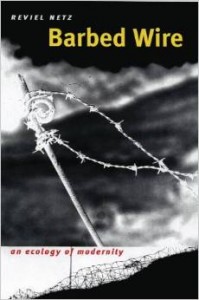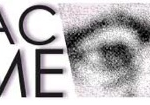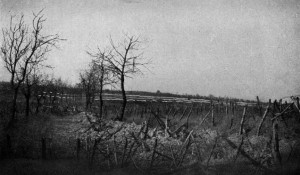Today and yesterday renewed anti-migrant violence erupted in the city of Rome.
Out of the Ghetto
Two documentaries just came out on the slavery-like conditions of migrant labourers in South Italy’s agricultural sector. Watch out for screenings of ‘La Belleville‘ and ‘Destination de Dieu‘ at
https://www.facebook.com/labellevilledoc (facebook) and @LaBellevilleDoc (twitter)
https://it-it.facebook.com/pages/Destination-de-dieu/1487329524813007 (facebook)
displacement economies
The LSE Book Review decided to dedicate a piece on an edited volume I have chapter in, on Displacement Economies (edited by Amanda Hammar, and published with Zed Books).
It describes the book as “a volume of varied, compelling discussions on displacement economies in Africa that seeks to shed light on the large influence of displacement on the continent’s economies, and address the lack of systematic research on this topic. It does so through unusual angles that range from the Somali economy of camel milk to the role that being ‘out of place’ plays in the identity and livelihoods of unarmed youth in Eastern DRC. Each of the ten authors admirably examines both the widening and contracting opportunities present in situations where unpredictability and uncertainty dictate both the economic market and peoples’ lives. All of the chapters in some way address the questions: What do we find when we broaden the lens on displacement economies? And, what is not just destroyed but produced by displacement?”
The book’s compelling invitation – which owes much to Amanda Hammar’s sharp introduction – is that it “to look beyond the crisis of displacement and examine the adaptation and innovation of the economies that persist in, and even result from, such situations.” Also welcome is the reviewer’s emphasis on the cohesiveness of our argument, which, given the disperse character of displacement in the diverse case studies we describe, should be read as an achievement.
You can read the entire book review here.
What is a border?
What is a border? This question formed the backbone of a talk I was invited to give on ‘Borders & Conflicts in an Age of Globalisation’ – co-organized by CICAM and the Border Research Unit at the University of Nijmegen late 2013. The talk involved references to all kinds of border places, which were, in some ways or another, tangled up in border wars. Using case studies from an edited volume I just published with my colleague Benedikt Korf on the topic, I tried to explain what I mean with that notion – of border conflict – and how one could start distinguishing between different scales of engagement – of state and border, international and local agencies and institutions.
Mos Maiorum
Yesterday an all too familiar scene at the Italian-Swiss border in Chiasso: a young African, probably from Eritrea or Somalia, is being accompanied the border guards from the Cisalpino train connnecting Milan and Zürich – with no apparent signs of resistance. According to the Swiss newspaper NZZ, since January 2014 5721 Eritreans have demanded asylum in Switzerland, notwithstanding sharper bureaucratic scrutiny since 2012. In the meantime, the massive European police deployment Mos Maiorum apparently generates more state violence against migrants in South Italy. Keep reporting public police checkpoints and identity checks throughout the European Union.
Barbed Wire
 I’ve just finished reading Reviel Netz’s, Barbed wire: an ecology of modernity (Middletown: Wesleyan University Press, 2004). The book offers a detailed genealogy of this pain-inducing technology, from its initial use in the control of cattle in the American Midwest, to the control over people’s mobility in the South African Boer war, the Nazi concentration camps and the Russian Gulag. The book has strong credentials (endorsements by amongst others Bruno Latour) and has been widely discussed on the web: see here for an interview with the author in Cabinet Magazine, for example, and here for a review by Ian Hacking.
I’ve just finished reading Reviel Netz’s, Barbed wire: an ecology of modernity (Middletown: Wesleyan University Press, 2004). The book offers a detailed genealogy of this pain-inducing technology, from its initial use in the control of cattle in the American Midwest, to the control over people’s mobility in the South African Boer war, the Nazi concentration camps and the Russian Gulag. The book has strong credentials (endorsements by amongst others Bruno Latour) and has been widely discussed on the web: see here for an interview with the author in Cabinet Magazine, for example, and here for a review by Ian Hacking.
I decided to share my own thoughts on the book with you here.
No Man’s Land
It is worth mentioning a fascinating new project by Noam Leshem (Durham University) and Alasdair Pinkerton (Royal Holloway University of London), called Re-inhabiting No Man’s Land: from dead zones to living spaces.
The concept of the No Man’s Land is frequently related to the trenches of the First World War, which somehow dissolved the boundary between body and space – transforming the soldier into an integral part of a frontline ecology. In their concept paper the authors trace back the rich history of this spatial category, which typically indicates spaces that are anything but terra nullius. Instead they identify two constitutive forces that together produce the unique dynamics of no-man’s land: abandonment and enclosure.
Click here for a project overview and here for their concept paper (pdf).
The Mediterranean Migration Frontier
 My edited journal issue with ACME – the e-journal for critical geographies – is out now!
My edited journal issue with ACME – the e-journal for critical geographies – is out now!
click here to reach the link of the totally free issue.
Beneath you find a more detailed description.
Benda Bilili!
Watch this beautiful documentary about the Congolese street band online until 4 May at
It reminded me so much of my friends, les handicapés de Kasindi, Umoja Ni Nguvu, Jaguar et Christian!
fundura = vie = souffrance




